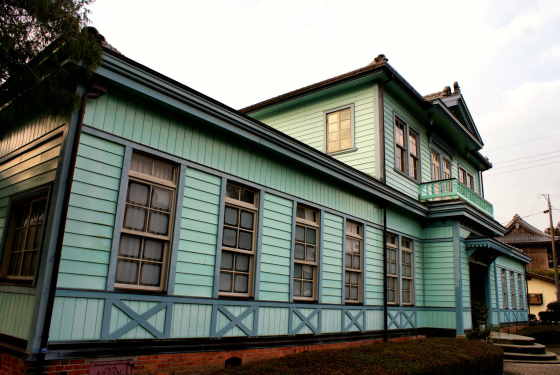Thursday, July 14, 2022
Hishino Triple Water Wheels
Monday, July 11, 2022
Kakurega no Mori the 8th largest tree in Japan
At chest height, the trunk has a circumference of 18 meters, at ground level the roots measure 34 meters in circumference, and it is 21 meters high, though before being damaged by a typhoon in 1991 it was said to be somewhat taller
Labels:
asakura,
kusunoki,
kyushu108,
sacred tree
Saturday, July 9, 2022
Yoshii Juku Historic Preservation District
Yoshii Juku Historic Preservation District
The last post town on the Hita Kaido, or the first if you are leaving Hita and traveling west, was Yoshii, now a part of Ukiha.
So much, in fact, that the area has been registered as a historical preservation district one of the topics I became intrigued by in recent years.
Labels:
hita kaido,
kyushu108,
preservation district,
ukiha
Tuesday, July 5, 2022
Kusano Juku Hita Kaido Post Town
The local history museum is housed in the former bank, a western-style building painted pale blue like the nearby culture centre.
Sunday, July 3, 2022
Yamabedo Cultural Center Kusano
The building began construction in Kurume but was dismantled and moved to Kusano in 1914 and completed in 1918. It was originally a hospital.
Labels:
Architecture,
hita kaido,
kyushu108
Friday, July 1, 2022
Susanoo Shrine Kusano
The architectural style is "Gongen Zukuri", which is a blend of Buddhist and Shinto styles.
The buildings were rebuilt in the Meiji period, and its not clear if they were painted at any time, but in many ways, the shrine seems more like a Toshogu shrine than the temple across the road that has that reputation.
Monday, June 27, 2022
Sennenji Temple the Nikko of Kyushu
It is said the temple was founded in 1233 and the Amida statues is an Important Cultural property.
Literally across the road is a large shrine which though unpainted, does have a lot of carvings, so maybe that is what the reference is to....
Labels:
hita kaido,
kusano,
kyushu108,
post town,
temple
Thursday, June 23, 2022
Hatsumode at Kurumesosha Hiyoshi Shrine
Japan Guide
January 2nd, 2014, I arrived back in Kurume to continue with my pilgrimage around Kyushu after having took a break to go home and visit my wife for a few days. On my way to the hotel I stoed in at a small, urban shrine, all decked out for the new year.
Subscribe to:
Posts (Atom)
































































